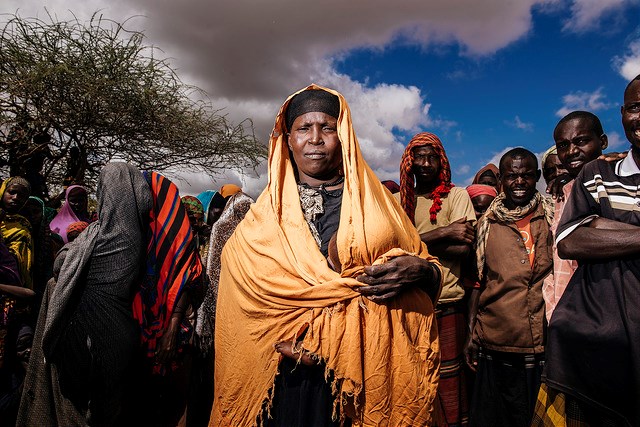
Lizzy Davies
Wednesday June 22, 2022

Only a “massive” and immediate scaling-up of funds and humanitarian relief can save Somalia from famine, a UN spokesperson has warned, as aid workers report children starving to death “before our eyes” amid rapidly escalating levels of malnutrition.
In a message to G7 leaders who are meeting from Sunday in Germany, Michael Dunford, the World Food Programme’s (WFP) regional director for east Africa, said governments had to donate urgently and generously if there was to be any hope of avoiding catastrophe in the Horn of Africa country.
“We need money and we need it now,” said Dunford. “Will we able to avert [a famine in Somalia]? Unless there is … a massive scaling-up from right now, it won’t be possible, quite frankly. The only way, at this point, is if there is a massive investment in humanitarian relief, and all the stakeholders, all the partners, come together to try to avert this.”
The Horn of Africa has suffered four consecutive failed
rainy seasons and is experiencing its worst drought in four decades, a climate
shock exacerbated by ongoing conflict and price rises caused by the Russian
invasion of Ukraine. Across the whole of east Africa, 89 million people are now
considered “acutely food insecure” by the WFP, a number that has grown by
almost 90% in the past year.
“Unfortunately, I do not see [that rate of growth] slowing
down. If anything, it seems to be accelerating,” said Dunford.
Last year, the UK and other G7 leaders promised to provide
$7bn (£5.7bn) to help countries prevent famine, but appeals for east Africa
have not managed to raise enough funds to stave off hunger.
Now those same leaders are being urged to commit to an
immediate funding package as Somalia, the worst-affected country, descends into
catastrophe. By September, at least 213,000 people in the worst-hit areas are
expected to be facing famine, according to the latest Integrated Food Security
Phase Classification (IPC) report.
On a recent visit to the country, Claire Sanford, deputy
humanitarian director of Save the Children, said she met mothers who had
already buried multiple children in the last year, and whose surviving children
were now suffering severe malnutrition. One acutely malnourished
three-month-old baby whom Sanford met “never made it through the night, and we
heard of a number of stories where that was the case”.
“I can honestly say in my 23 years of responding to
humanitarian crisis, this is by far the worst I’ve seen, particularly in terms
of the level of impact on children,” she said. “The starvation that my
colleagues and I witnessed in Somalia has escalated even faster than we
feared.”
In 2011, Somalia experienced a famine that killed more than
250,000 people, mostly children, but Sanford said many of the people she met
said the conditions now were even worse.
“We have genuinely failed as an international community that
we have allowed the situation to get to the extent it is at the moment. In
2011, we vowed as a community that we would never, ever let this happen again.
And yet we have failed in that promise,” she added.
Dunford said inadequate funding had hampered efforts to
learn from the 2011 famine. “We are seeing children dying before our eyes,
seeing populations that have lost their livelihoods. It’s not that we didn’t
learn the lessons of 2011; there was a lot of very good learning from that
crisis. It’s just we haven’t been able to implement it to the extent required
because of the lack of funding.”
In April, the UN had received only 3% of funds for its $6bn
appeal for Ethiopia, Somalia and South Sudan.
Danny Sriskandarajah, chief executive of Oxfam GB, said the
current crisis was partly due to the British government’s “compassion failure”
and decision to slash the overseas aid budget by £4.6bn last year.
According to the latest IPC assessment for Somalia, an
estimated 1.5 million under-fives face acute malnutrition by the end of the
year, including 386,400 who are likely to be severely malnourished. Those
numbers are only expected to go up.